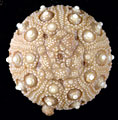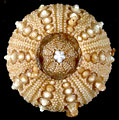The Echinoid Directory
Ctenocidaris ( Eurocidaris ) Mortensen, 1909, p. 3
| Diagnostic Features |
|
|---|---|
| Distribution | Recent; Subantarctic. |
| Name gender | feminine |
| Type | Cidaris nutrix Wyville Thomson, 1876, p. 62, by original designation. |
| Species Included |
|
| Classification and/or Status |
|
| Remarks |
|





